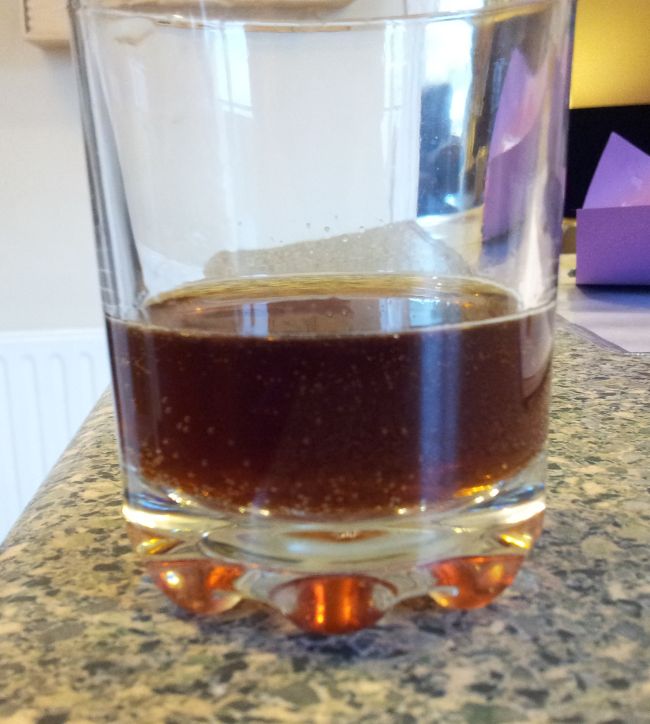Here's my Milestone IPA:

It's not very bubbly (but you can see there is some). It was fermenting for four weeks, and in the barrel for three weeks. I added 80g of glucose when barreling the 20 litres.
When pouring this glass, there was pressure. But by the time I had poured this small glass, air bubbles were going back up the tap. You can see there's no head on it.
I do have small CO2 capsules (the compressed gas cylinders), although I haven't used any yet.
Did I make beer? I mean, it tastes quite malty as far as I can tell, so I hope it really did ferment.
Here's a pic of someone else's beer of the same type:
http://jimshomebrewforum.co.uk/viewtopic.php?p=184341&sid=b1c58237290056642f2e6e214296412c#p184341

It's not very bubbly (but you can see there is some). It was fermenting for four weeks, and in the barrel for three weeks. I added 80g of glucose when barreling the 20 litres.
When pouring this glass, there was pressure. But by the time I had poured this small glass, air bubbles were going back up the tap. You can see there's no head on it.
I do have small CO2 capsules (the compressed gas cylinders), although I haven't used any yet.
Did I make beer? I mean, it tastes quite malty as far as I can tell, so I hope it really did ferment.
Here's a pic of someone else's beer of the same type:
http://jimshomebrewforum.co.uk/viewtopic.php?p=184341&sid=b1c58237290056642f2e6e214296412c#p184341








![Craft A Brew - Safale S-04 Dry Yeast - Fermentis - English Ale Dry Yeast - For English and American Ales and Hard Apple Ciders - Ingredients for Home Brewing - Beer Making Supplies - [1 Pack]](https://m.media-amazon.com/images/I/41fVGNh6JfL._SL500_.jpg)







































